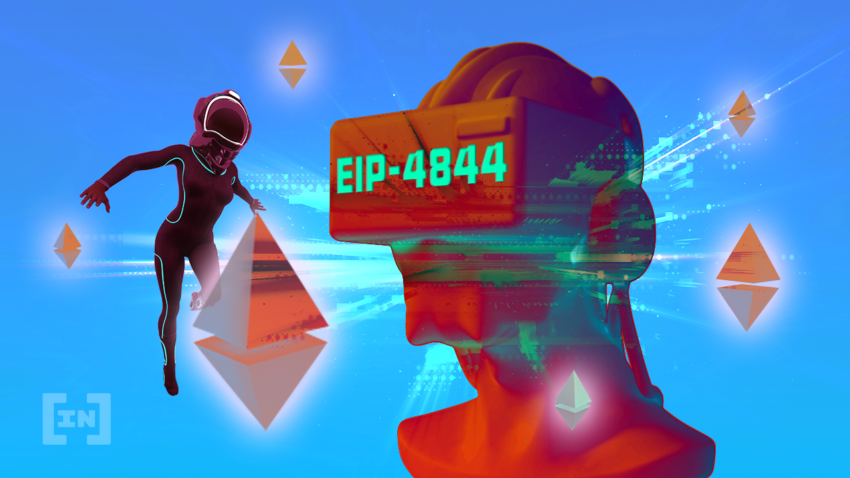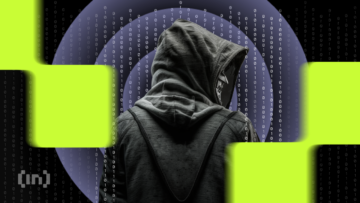The Ethereum network is constantly evolving, and many technical proposals have been introduced over the years. One such proposal is EIP-4844 — introduced by Vitalik Buterin — which focuses on a sharding technique.
What is EIP-4844, and how will it influence the future of the Ethereum network and its users? Here’s an easy-to-understand explanation of a highly technical Ethereum proposal that will make the network more accessible to all users.
In this guide:
What are EIPs?
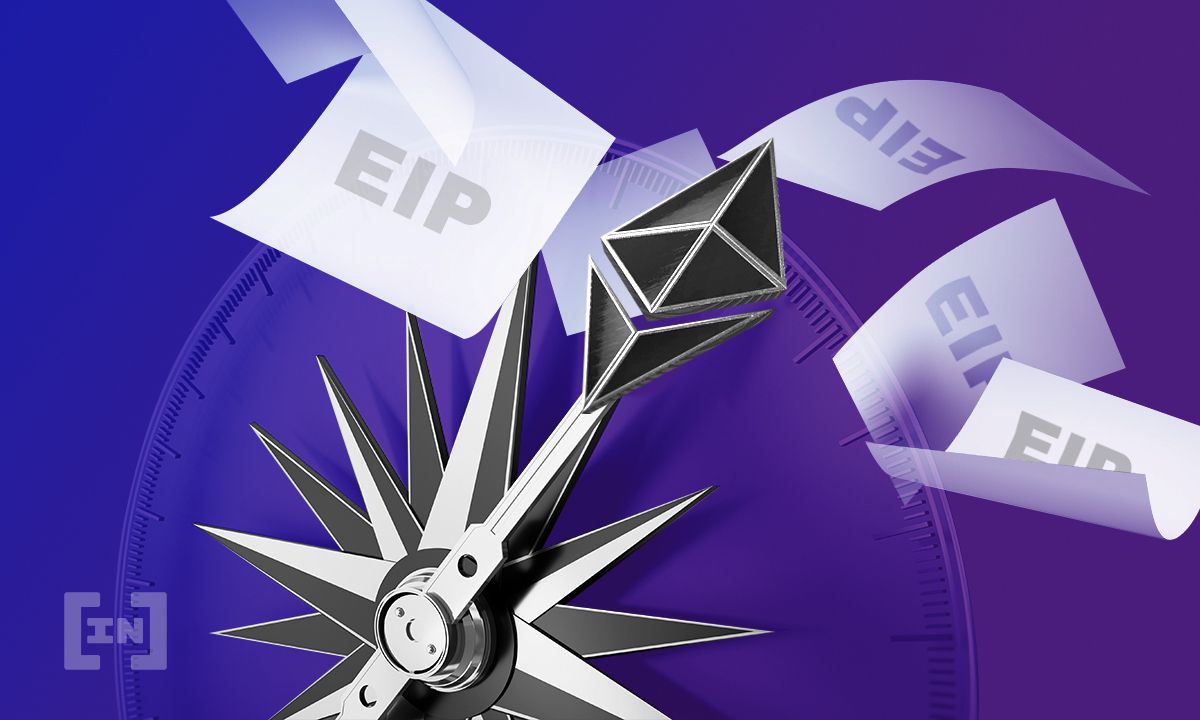
Ethereum Improvement Proposals (EIP) are proposals submitted by programmers for the ecosystem, and they aim to create new standards and add features to the Ethereum network.
EIPs are technical specifications that describe the changes proposed and serve as the “source to truth” for the community. Any community member can create an EIP. If you wish to do so, you will have to check out EIP1, which contains guidelines for creating EIPs.
As you might already know, Ethereum is in the process of upgrading from a proof-of-work (PoW) to a proof-of-stake (PoS) consensus mechanism. This switch takes time and involves many intermediary steps. EIPs are some of these steps.
For instance, an EIP should contain a brief technical description of the feature and its reasoning. The EIP author is responsible for building consensus in the community and documenting dissenting views. Because of the technical requirements for submitting an EIP that is well-formed, many EIP authors are application or protocol developers. One controversial EIP is EIP-4844, which involves some programmers from the Ethereum ecosystem, including Vitalik Buterin. This EIP aims to create a more efficient method to organize transaction data on the Ethereum blockchain.
How does danksharding work?
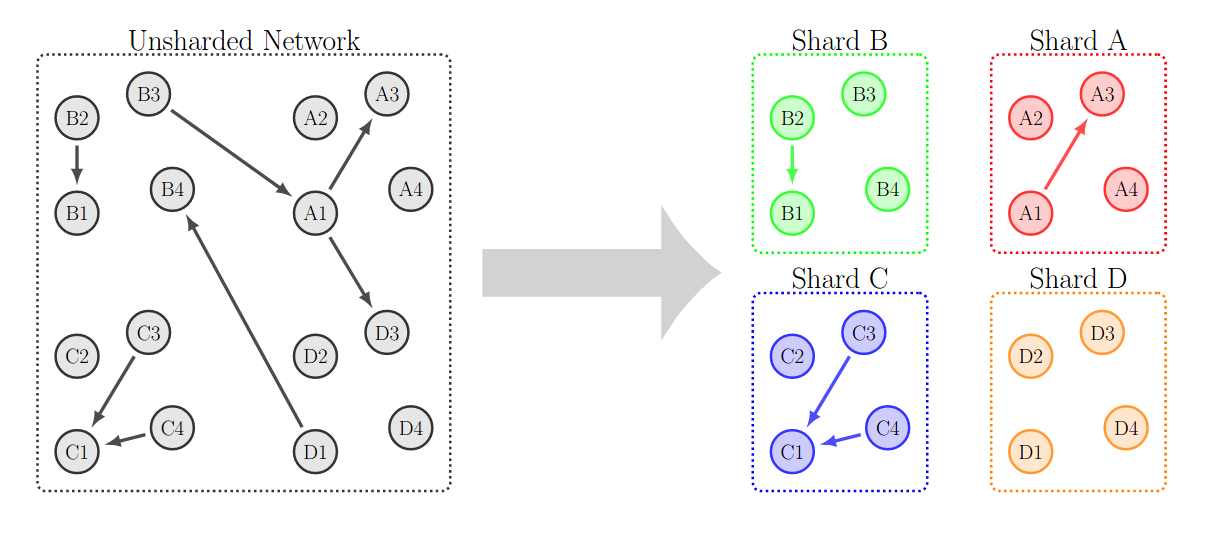
Danksharding is the sharding scheme for Ethereum, which introduced significant simplifications on the way transaction data is handled by validators.
The concept of DankSharding is introduced in EIP-4844. The name “DankSharding” comes from “Dank,” an abbreviation for Dankrad Feist, one of the main contributors to the proposal.
Unlike the old sharding protocols, DankSharding introduces the merged-fee market. Instead of having a fixed number of shards with distinct blocks and distinct block proposers, Danksharding has only one proposer who chooses all transactions that enter that slot.
The concept of proposer/builder separation (PBS) is introduced to avoid high system requirements on validators. A specialized class called block builders can bid on the right of choosing the contents of the slot. The proposer needs only choose the valid header with the highest bid.
Only the block builder can process the entire block. Third-party decentralized Oracle protocols are also possible to create a distributed block builder. All validators and users can verify blocks efficiently using data availability sampling.
What is EIP-4844 (The proto-danksharding proposal)?
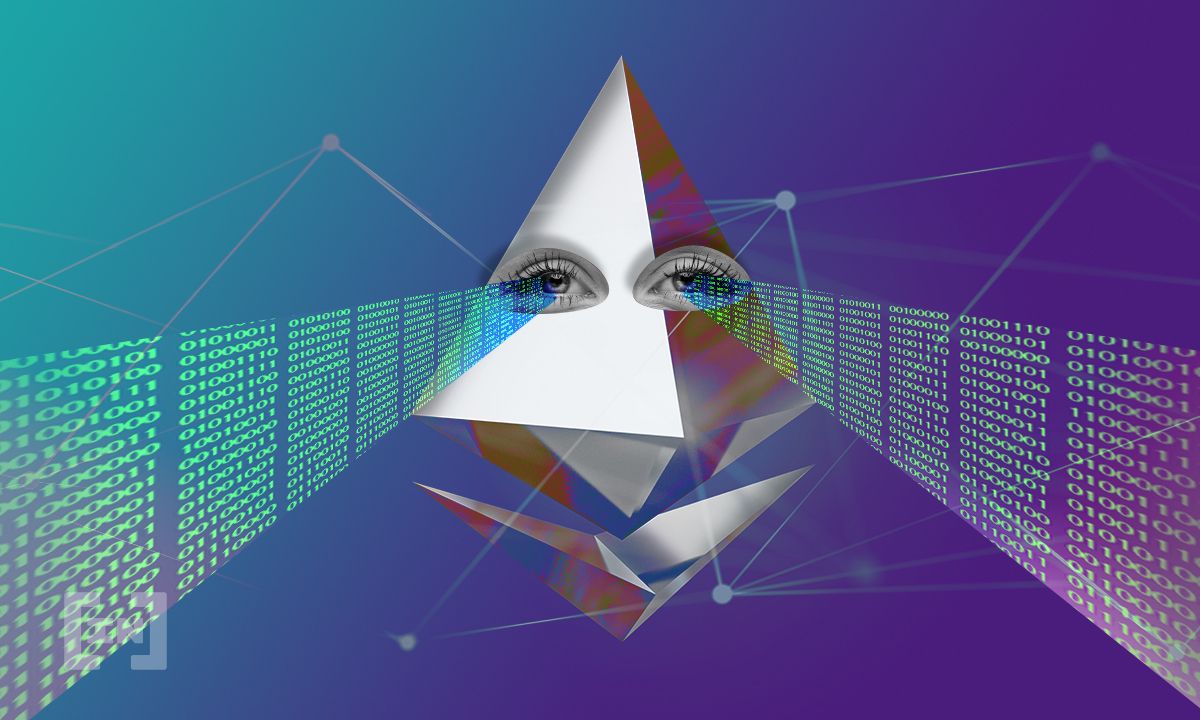
EIP-4844 — also known as the proto-danksharding proposal — was created by Vitalik Buterin, together with other programmers from the Ethereum ecosystem. The main purpose of EIP-4844 is to reduce gas fees on the network, especially for the rollup solutions, without sacrificing decentralization. Rollup solutions, such as Arbitrum and Optimism, could have reduced gas fees by up to 100 to 1000 times.
EIP-4844 proposal is meant as an interim solution until the Ethereum 2.0 update is complete. The proposal explains a new method to help divide the information needed in a transaction, such as verification rules and the transaction format, without actually implementing any sharding.
The most important feature of EIP-4844 is the blob, which is a new type of transaction. The blob is similar to regular transactions, but it only carries an extra piece of data — called the blob. The pieces of data, or blobs, are large data packages (around 125 KB), but this type of transaction would be cheaper to execute than a calldata with the same data. However, the data stored in a blob is not accessible to the EVM, and it can only see it, but not verify it.
These blobs can be downloaded by validators and users. The data bandwidth, for a slot, in proto-danksharding is limited to 1 MB (instead of 16 MB). This change in the way data is transferred makes a huge difference that addresses the scalability issue that we’re all so familiar with when it comes to Ethereum. By adopting the EIP-4844 proposal, this data from the blobs is not the gas usage for the ordinary Ethereum transactions.
The impact of EIP-4844 (proto-danksharding)
The Ethereum blockchain was designed to accept transactions of up to 90 KB of each block space. The maximum size of a block could be 18 MB if the gas fee model was to be modified. But this model is too expensive for users and validators alike. However, a dynamic fee market could help include more transactions without straining the network. One such proposal was the EIP-1559, which is a hybrid system between a base fee and tips that incentivized miners and burns ether with every network transaction.
To add to this existing system, the EIP-4844 also introduces a limit to the maximum number of blobs to be included in a block. These are stored on the consensus layer (beacon nodes), and not the execution layer. They only require confirmation from the EVM.
Another important note is the increasing size of the block and the result it may have on the potential validators. Each validator requires increased hardware capabilities, as the blockchain data that needs to be stored can add up to 2.5 TB per year. A possible way to reduce this storage need would be to delete the blob data after a certain time.
EIP-4844 roadmap
- EIP-4844 was introduced and tested at the ETH Denver event.
- After EIP-4844 is successfully deployed on the execution layer, it will be deployed on the consensus layer of Ethereum.
- The proto-danksharding will be implemented in Ethereum’s Shanghai hard fork (assuming everything goes according to plan).
How will EIP-4844 help users?

The community refers to EIP-4844 as the “stop-gap” solution. To alleviate the burden of ever-increasing transaction size. The users and the network will feel this change as the gas fees will get lower.
Blob transactions are introduced by the EIP in the exact same format as they were expected to exist in final sharding specifications. This allows rollups to scale up to 2 MB per slot. There is a separate fee market that allows fees to be extremely low, while the system’s usage is limited.
Rollup scaling stop-gaps are intended to temporarily relieve scaling problems without adding development burdens (for rollups who wish to benefit from this relief). Rollups currently use calldata. But rollups will no longer have the option of using calldata in the future. Sharded data, also known as “blobs,” will be cheaper. Rollups will need to upgrade their data processing system at least once.
Hence, there are two ways to apply this stop-gap solution. The first one would be to lower the gas cost of the existing calldata. The second one is to select the format which will be used for sharding the data, but not yet shard it. And this is exactly what EIP-4844 brings.
The EIP-4844 includes the following:
- A new transaction type, which is needed for “full sharding”
- All required execution-layer logic for full sharding
- All required execution/consensus cross-verification logic for full sharding
- Layer separation between Beacon Block verification and data availability sampling blobs
- The Beacon Block logic is required for full sharding.
- A self-adjusting and independent gas price for blobs.
Note that EIP-4844 only talks about transaction formats and verification rules and not the implementation of this new sharding mechanism. But when this EIP gets implemented, users will benefit from lower transaction fees.
Will EIP-4844 help scale the Ethereum blockchain?
We’ll have to wait for this proposal to become a reality before we can argue about the effects it has on the network. From what it seems, Ethereum rollup protocols will see considerably reduced transaction fees, and this could open up a whole new world for smaller investors and novices.
We are all excited about the upcoming version of the Ethereum blockchain. By the end of 2022, the proof-of-stake (PoS) Ethereum blockchain will be rolled out. Ethereum improvement proposals (EIPs) such as EIP-4844 pave the way to a scalable and efficient network. The ongoing discussion about the EIP-4844 can be followed on the Ethereum Magicians forum.
EIPs can be confusing, even for seasoned crypto investors. Join the discussion at the BeInCrypto Telegram channel and ask the experienced community members what they think about EIP-4844 and other improvement proposals.
Frequently asked questions
What are EIPs?
What is EIP-4844?
Disclaimer
In line with the Trust Project guidelines, the educational content on this website is offered in good faith and for general information purposes only. BeInCrypto prioritizes providing high-quality information, taking the time to research and create informative content for readers. While partners may reward the company with commissions for placements in articles, these commissions do not influence the unbiased, honest, and helpful content creation process. Any action taken by the reader based on this information is strictly at their own risk. Please note that our Terms and Conditions, Privacy Policy, and Disclaimers have been updated.


